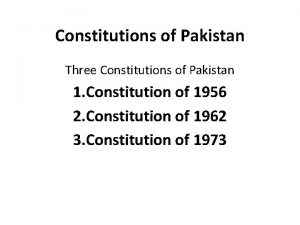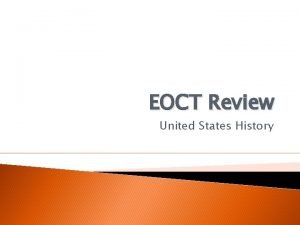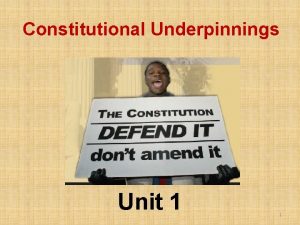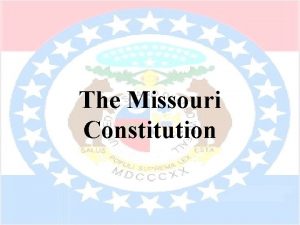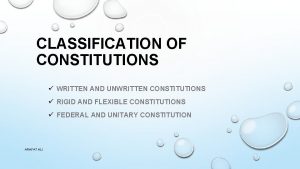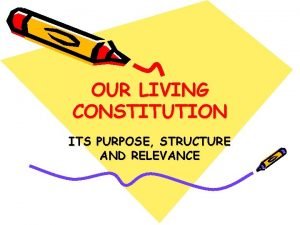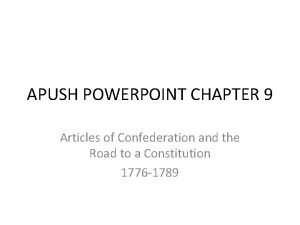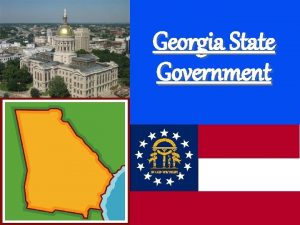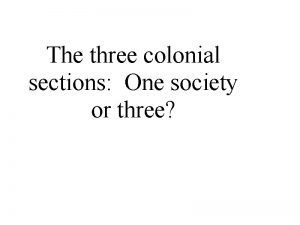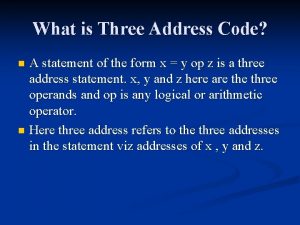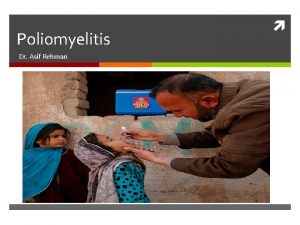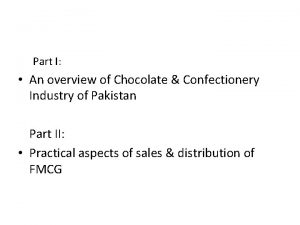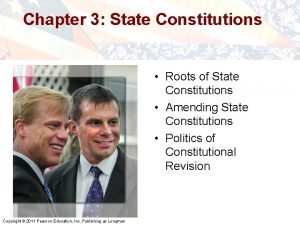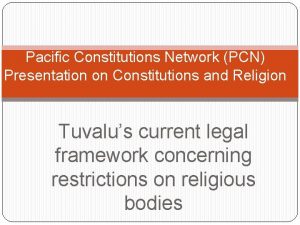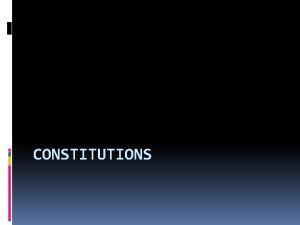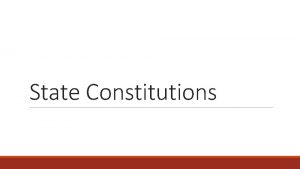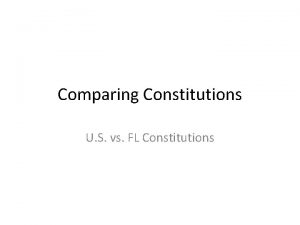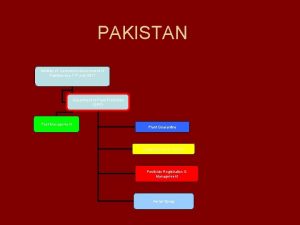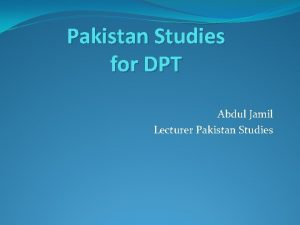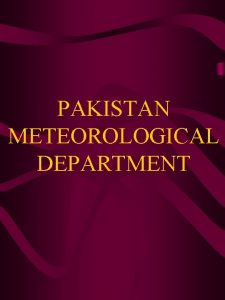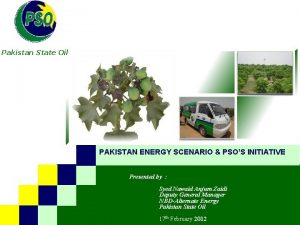Constitutions of Pakistan Three Constitutions of Pakistan 1
















- Slides: 16

Constitutions of Pakistan Three Constitutions of Pakistan 1. Constitution of 1956 2. Constitution of 1962 3. Constitution of 1973

Constitution: Constitution is an written a document which defines and distributes functions and powers among the various organs of the state. • Separation of powers: constitution separate the power of legislature, executive and judiciary. • Division of powers: Constitutionally powers are distributed and divided between the Centre and provincial governments.

Substantive law: This Law relates to concerns of right and responsibility. The body of substantive law also relates to crime, criminals, trial and punishment for criminals. Civil and criminal law is also includes in substantive law Procedural law: This law deals with technical aspects and steps how rights and responsibilities enforced. The body of procedure law relates to the procedure of law like court hearing and administrative proceeding.

Constitution of 1973 • Constitution of Pakistan is the supreme law of Pakistan. There have been several documents known as the Constitution of Pakistan. The Constitution of 1973 is the existing constitution, which provides for a parliamentary system with a President as head of state and popularly elected Prime Minister as head of government. Pakistan has a bicameral legislature that consists of the Senate(upper house) and the National Assembly(lower house). • Together with the President, the Senate and National Assembly make up a body called the Majlis-i-Shoora (Council of Advisors) or Parliament. • 3 rd Constitution was enforced on 14 August 1973. • 280 Articles, twelve parts-six schedule. • Bicameral legislature was introduced. National Assembly Senate • Seats 200 64 • Now 342 after Amendments • Official Language: Urdu

• Parliamentary form of government was announced. The president is a titular head of the country and all executive powers are vested to prime minister and his Cabinet. The article 81 D deals the existence of Cabinet. • In this form of government President is the head of state and prime minister is head of government. He is Chief Executive of his Cabinet, • Under the article 91(4) the members of cabinet of P. M is • Collectively responsible to the National Assembly of Pakistan. Prime minister is the head of cabinet. He appoint the members of cabinet and also can dismiss. • In the existing Cabinet of 2013 all the members belongs to PMLN. • In the parliamentary system the prime minister plays a influential role in running the Government. • President is elected for five years by the joint session of National Assembly. No person can remain president for more than two terms.

Powers of prim minister under the Constitution of 1973 • • • PM is the chief Advisor of president. He formats the cabinet. Leader of National Assembly. Representative of nation in international level. Duty of P. M is to inform the President about work of Cabinet. P. M is the head of his party. Budget is prepared under the P. M supervision. PM plays vital role in the law making. PM can ask the President to dissolve the National Assembly. He is responsible for the defense of the country. He maintain the law and order in the country.

• Powers of President • Vast Executive powers: He appoints the Governors, Attorney General, Chief Election Commissioner, Chief of Staff of the Army, the Navy and Air force. • President appoint the Chief Justice of Pakistan, and Chief Justice appoint the judges of high court and supreme court. • President has powers to proclaim the emergency.

• President can impose emergency on state and on any province in these conditions: i. Economic crisis ii. Break down of governmental machinery. iii. Attack from external border. Legislation powers: Assenting authority of a bill. • President can summon the session of National Assembly and Senate • He can address any house of Parliament • President can dissolved the Nation Assembly on the advice of Prime minister. He is bound to consult with prime minister. • Under the Article 89 President has power to issue the ordinance in case National Assembly is not in session and in critical situation in state

• Conditions of ordinance : • Government is not functioning properly • Threat to the federation • First time in 1985 , through the 8 th Amendment president enhanced the discretionary powers under Article 58(2 B). under this Article president can dissolve the National Assembly without any consultation.

• in 1997, the 13 th amendment has deleted Articles 58(2)(B) and 112(2)(b) from the constitution, thus undoing the powers of the President and Governors to dissolve, in their discretion, National Assembly and Provincial Assemblies. • In 2004, the 17 th amendment again active the Articles 58(2)(B) and 112(2)(b). • In 2010, the 18 th Amendment has been drawn the Article 58(2)(b).

Conditions for impeachment of president: on the charge of mental illness, misconduct violation of Constitution. Procedure: 2/3 majority of National Assembly is required for impeachment of President. • Two-third majority of National Assembly is required for passing a bill. • • •

• Federal system was introduced. • Two lists were presented: • 1. Federal list Part-ii • 59 8 • In 1972 all political parties showed strong resentment against the absolute control of Central Government over the matter of oil, gas, electricity, river water, dams, railways, industrial projects etc. • Due to these reasons federal list was divided in two parts. • For running the second part of federal list which comprised on 8 departments a new institution was formed called as Council of Common Interest. • CCI was consist on chief minister of provinces and federal ministers that nominated by Prime minister. • This council of Common Interest could formulate and regulate the policies and administration in part-ii of Federal list.

• 2 nd list Concurrent list 47 depts. • In practical terms the Concurrent list was a seed of conflict between Centre and provinces. • The proponents of provincial autonomy in Pakistan often demand complete abolishment of the concurrent list. • It was written in the constitution of 1973 after the 10 years concurrent list should abolished and provincial autonomy will maintain through providing them more departments. • In 18 th Amendment the concurrent list was abolished and more department transferred to the provinces.

• Solutions for resolving the conflict between Provinces and Centre over concurrent list. 1. Federal Legislature is the supreme authority under the Article 143 of 1973 Constitution. 2. In case of dispute between Centre and provinces on the legislation of concurrent department, then chief Justice of Pakistan can resolve the dispute. 3. Amendments in Constitution can be made in the case of conflict between Central and Provincial Governments.

• First time fundamental rights were introduced in this Constitution in Article 1 -25. • 54, 58 -2 b, 56 -1, 58 -1 Articles deals with powers of president • 46, 91, 95 Articles defines the power of president • First time in the history of Pakistan, there was consensus of all political parties on Constitution of Pakistan 1973.

• Another innovation in this Constitution, NFC National Finance Commission was settled, this commission is consisted on Federal and provincial Finance ministers.
 Three constitutions of pakistan
Three constitutions of pakistan National powers
National powers What are the concerns of the constitutions?
What are the concerns of the constitutions? State and federal constitutions
State and federal constitutions How many constitutions has missouri had
How many constitutions has missouri had What is a written constitution
What is a written constitution State and federal constitutions
State and federal constitutions Conventions to ratify constitutions apush
Conventions to ratify constitutions apush How many constitutions has georgia had
How many constitutions has georgia had Orange diamond shaped signs warn the motorist of
Orange diamond shaped signs warn the motorist of Three hobbits
Three hobbits The three colonial sections-one society or three
The three colonial sections-one society or three Othello act 3 summary
Othello act 3 summary 3 address code
3 address code In three minutes write three things
In three minutes write three things Epi schedule pakistan
Epi schedule pakistan Kidco punch candy
Kidco punch candy
